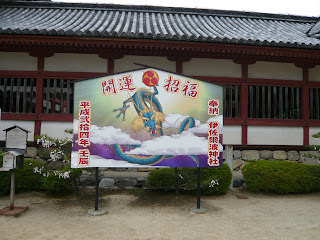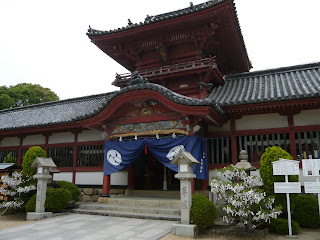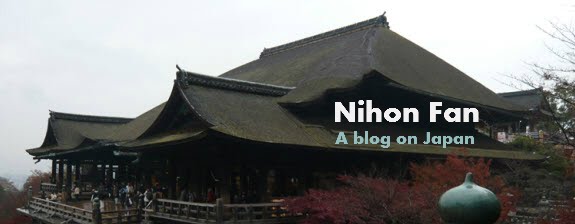The main building is built in the Hachiman-zukuri style, with two aligned buildings connected by a raingutter between the two roofs. The space underneath the gutter is known as the ai no ma. The front half is in the nagare-zukuri (flowing) style, the rear half in the kirizuma-zukuri (gable roof) style. The Lattice Wall has a tile roof with lovely green diamond-shaped lattices. The Moshidono has a cypress shingle roof, with the front of the building, parallel to the ridge, open to the outside. The Romon is made in the irimoya-zukuri (hip and gable roof) style, with double eaves and a clay tiled roof. The guardian king statues at the four corners of the room area are a rare feature. The woodword and decorative carvings of the buildings are painted red, with touches of white and other colors, while the pillars of the main building are covered with gold leaf, all in splendid Momoyama period (1573-1603) style. The wooden Kairo (corridor), which is over 100m in length, and a stature of Saint Ippen are evidence of the long history of Shinto and Buddhist syncretism. – Matsuyama Board of Education.
The Isaniwa Shrine was built by Matandara Sedanaga, the then lord of Matsuyama, in 1667 in order to show his gratitude for success of archery on horseback. The shrine called Hachiman style is rare - even all over Japan and is designated by the Dept. of Culture as an important cultural asset.
Hachiman is the Japanese god of archery and war, combining elements of both Shinto and Buddhism. Hachiman is often called the god of war. He is considered the protector of Japan and the Japanese people. The name means God of Eight Banners, referring to the eight heavenly banners that signaled the birth of divine Emperor Ojin (the 15th emperor of Japan). Emperor Ojin is said to be interred at this shrine.

























